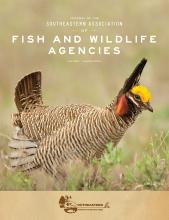Hunter Use of Publicly Managed Mourning Dove Fields
We attempted to quantify hunter use in five publicly managed mourning dove (Zenaida macroura) fields during the 2007 and 2008 dove hunting seasons on Conoho Farms (CF) in Martin County, North Carolina. Self-administered diary surveys (n=845) were mailed to every individual receiving a special hunt (SH) and point-of-sale (PS) permit during both dove hunting seasons on CF. We used the modified Tailored Design method to collect hunter effort and harvest data for each hunting season. Data were analyzed using the Kruskal-Wallis test to determine differences in hunter effort and harvest between...
